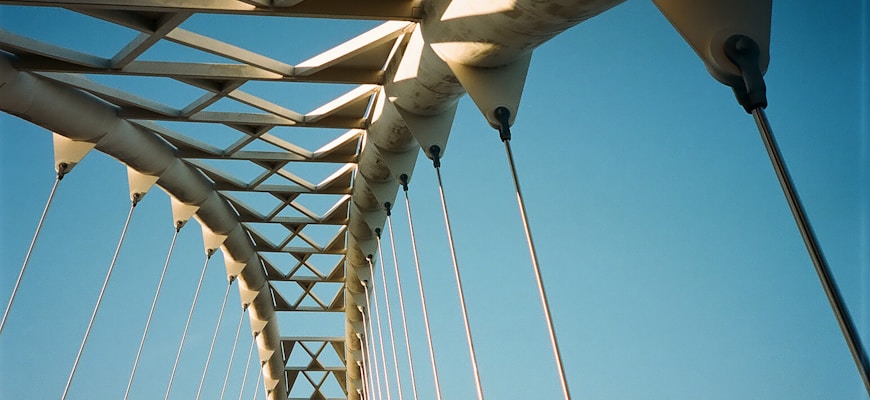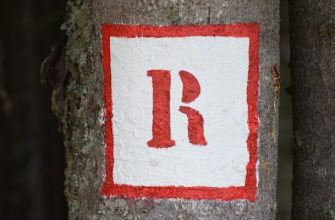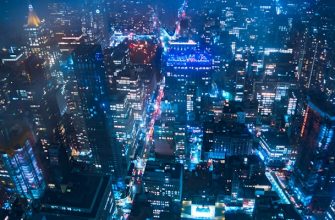- Understanding RWA: The Fusion of Tangible and Intangible Wealth
- The Role of Real-World Assets in the Digital Economy
- How RWAs Enhance Liquidity and Accessibility in Finance
- Exploring the Technology Behind Real-World Asset Tokenization
- Regulatory Challenges and Opportunities in RWA Markets
- Future Trends: The Evolution of RWAs in a Decentralized World
Understanding RWA: The Fusion of Tangible and Intangible Wealth
RWA, or Real World Assets, represent a significant advancement in the financial landscape, bridging the divide between tangible and intangible wealth. This concept integrates physical assets, such as real estate and commodities, with digital representations, enhancing liquidity and accessibility. The fusion of these asset types allows for innovative investment opportunities, empowering individuals and institutions to diversify their portfolios effectively.
Understanding RWA involves recognizing the benefits that arise from this integration. By digitizing physical assets, RWA increases their market reach and facilitates fractional ownership, which means that investors can own a portion of high-value assets without needing substantial capital. This democratization of wealth empowers a broader audience to participate in investment opportunities that were previously out of reach.
- Liquidity: RWA enhances the liquidity of traditionally illiquid assets, enabling quicker transactions and broader market access.
- Fractional Ownership: Investors can purchase fractions of high-value assets, lowering the barriers to entry.
- Transparency: Blockchain technology ensures that transactions involving RWA are transparent and secure, reducing fraud risk.
- Diverse Investment Options: The integration of physical and digital assets opens up a variety of investment avenues, catering to different risk appetites.
The potential of RWA lies in its ability to create a seamless connection between the physical and digital realms. As more investors recognize the value of integrating tangible assets with digital platforms, the RWA market is expected to grow significantly. This growth will not only foster innovation but also contribute to the evolution of the global economy, making wealth creation accessible to a wider audience.
The Role of Real-World Assets in the Digital Economy
In the evolving landscape of the digital economy, the significance of real-world assets (RWA) cannot be overstated. Real-world assets serve as a crucial link between tangible and digital assets, enabling their integration into blockchain technology. This transition enhances liquidity and opens up new avenues for investment, allowing individuals and institutions to diversify their portfolios effectively.
Real-world assets encompass a wide range of physical items, including real estate, commodities, and even art. By tokenizing these assets, they can be represented on digital platforms, creating a seamless connection between the physical and digital realms. This process not only increases accessibility but also democratizes investment opportunities for a broader audience.
- Increased Liquidity: Tokenized RWAs can be traded 24/7 on various platforms, offering immediate liquidity that traditional assets lack.
- Fractional Ownership: Individuals can invest in high-value RWAs by purchasing fractions of the asset, lowering the barrier to entry.
- Global Reach: Digital platforms facilitate cross-border transactions, allowing investors from different regions to access RWAs.
- Transparency: Blockchain technology provides a secure and transparent way to track ownership and transfer of RWAs.
As the digital economy continues to expand, the role of real-world assets becomes increasingly vital. They not only enhance the functionality of digital platforms but also foster trust among investors. By bridging the gap between physical and digital assets, RWAs contribute significantly to the overall stability and growth of the digital economy.
In conclusion, real-world assets are instrumental in shaping the future of investment. Their ability to integrate into the digital landscape empowers a new generation of investors while providing stability and security in an ever-changing market. As businesses and individuals recognize the potential of RWAs, their importance in the digital economy will only continue to grow.
How RWAs Enhance Liquidity and Accessibility in Finance
Real World Assets (RWAs) play a crucial role in enhancing liquidity and accessibility within the financial ecosystem. By bridging the gap between physical and digital assets, RWAs provide a seamless integration that allows investors to engage with tangible assets in a digital format. This transformation is essential for modern finance, as it facilitates smoother transactions and expands market participation.
The incorporation of RWAs into financial systems enables the tokenization of physical assets, such as real estate, commodities, and artworks. Tokenization involves converting physical assets into digital tokens that can be traded on blockchain platforms, thus enhancing liquidity. This process not only increases the speed of transactions but also broadens the pool of potential investors, making it easier for individuals to access and invest in assets that were previously out of reach.
- Increased Liquidity: RWAs allow for fractional ownership, meaning that investors can purchase a portion of an asset rather than the entire entity. This feature significantly enhances liquidity, as it allows assets to be easily bought and sold on secondary markets.
- Broader Accessibility: By digitizing physical assets, RWAs lower the barriers to entry for investors. Individuals can invest in high-value assets with minimal capital, democratizing access to investment opportunities.
- Transparency and Security: The integration of RWAs into blockchain technology ensures that transactions are recorded transparently and securely. This transparency builds trust among investors and enhances the overall reliability of financial transactions.
Furthermore, RWAs contribute to a more efficient market by reducing the friction associated with traditional asset transfers. The streamlined processes involved in trading tokenized assets lead to faster settlements and reduced costs, which ultimately benefits both investors and asset holders. By fostering greater liquidity and accessibility, RWAs are poised to revolutionize the investment landscape, creating a more inclusive financial environment.
Exploring the Technology Behind Real-World Asset Tokenization
Tokenization of real-world assets (RWA) is revolutionizing the way physical assets are represented in the digital realm. This innovative process involves converting tangible assets such as real estate, art, and commodities into digital tokens that can be easily traded and managed on a blockchain. The technology behind this transformation leverages smart contracts and decentralized ledgers to ensure transparency and security, facilitating a more efficient market.
- Smart Contracts: These self-executing contracts with the terms of the agreement directly written into code help automate transactions, reducing the need for intermediaries.
- Blockchain Technology: A decentralized ledger that records all transactions, ensuring immutability and transparency, thereby enhancing trust among participants.
- Digital Wallets: Secure digital wallets are essential for holding and managing tokenized assets, providing users with easy access and control over their investments.
- Regulatory Compliance: Ensuring that tokenized assets meet legal standards is crucial for the acceptance and legitimacy of RWA in the market.
The process of tokenization not only democratizes access to investment opportunities but also enhances liquidity in traditionally illiquid markets. By breaking down physical assets into smaller, tradable tokens, more investors can participate in markets that were previously inaccessible. This fragmentation allows for fractional ownership, enabling individuals to invest in high-value assets without needing substantial capital.
As technology continues to evolve, the integration of real-world asset tokenization into various sectors, including finance, real estate, and art markets, is expected to grow. The ability to authenticate and track ownership through blockchain provides a robust framework for enhancing value and trust in transactions involving physical assets.
In conclusion, the exploration of the technology behind real-world asset tokenization highlights its potential to bridge the gap between physical and digital assets. By incorporating smart contracts, blockchain technology, and regulatory compliance, tokenization is setting the stage for a more inclusive and efficient market landscape.
Regulatory Challenges and Opportunities in RWA Markets
The regulatory landscape surrounding Real World Assets (RWA) markets presents both challenges and opportunities. As the integration of physical assets into the digital realm accelerates, regulatory frameworks must evolve to address unique risks and benefits associated with RWAs. These assets encompass a broad range of items, including real estate, commodities, and financial instruments, all of which require tailored governance.
One of the primary challenges in RWA markets is the lack of a standardized regulatory framework. Different jurisdictions have varying rules regarding asset classification, ownership rights, and transaction processes. This disparity can create confusion for investors and hinder the seamless transfer of assets across borders. As RWA markets continue to grow, regulatory bodies are faced with the task of harmonizing these regulations to foster a more cohesive global market.
On the other hand, these challenges present significant opportunities for innovation. Regulatory technology (RegTech) solutions can help streamline compliance processes, enabling quicker adaptation to regulatory changes. Additionally, blockchain technology can enhance transparency and traceability in RWA transactions, addressing concerns related to fraud and misrepresentation.
- The implementation of smart contracts can automate compliance checks, reducing the burden on market participants.
- Increased collaboration between regulators and industry stakeholders can lead to the development of best practices and guidelines tailored for RWA markets.
- Educational initiatives aimed at informing investors about the regulatory landscape can build trust and encourage participation in RWA markets.
In conclusion, navigating the regulatory challenges in RWA markets requires a proactive approach. By leveraging technology and fostering collaboration, opportunities for growth and innovation can emerge, ultimately bridging the gap between physical and digital assets. As the market matures, a balanced regulatory framework will be essential to ensure the sustainable development of RWAs, benefiting investors and enhancing market stability.
Future Trends: The Evolution of RWAs in a Decentralized World
The evolution of Real-World Assets (RWAs) in a decentralized world is a pivotal development in the intersection of physical and digital economies. As RWAs continue to gain traction, their integration into blockchain technology is reshaping traditional asset management. This transformation not only enhances transparency but also introduces greater accessibility for investors across the globe.
One of the most significant trends in the RWA landscape is the tokenization of tangible assets. By converting physical assets into digital tokens, owners can facilitate fractional ownership, enabling a broader range of investors to participate in markets that were previously inaccessible. This democratization of investment opportunities is fostering a new era of inclusivity in asset ownership.
- Increased Liquidity: Tokenizing RWAs enhances liquidity by allowing assets to be traded on decentralized exchanges, making it easier for investors to buy and sell.
- Enhanced Security: Blockchain technology offers a secure way to track ownership and transaction history, minimizing risks associated with fraud.
- Global Accessibility: Decentralized platforms enable investors from different geographical locations to invest in RWAs without the barriers imposed by traditional finance.
- Smart Contracts: The use of smart contracts automates transactions, ensuring that agreements are executed seamlessly and efficiently.
Moreover, the regulatory landscape is adapting to accommodate RWAs. Governments and regulatory bodies are increasingly recognizing the potential of RWAs, leading to the establishment of clearer guidelines that encourage innovation while protecting investors. This evolving regulatory framework is crucial for the mainstream adoption of RWAs, as it builds trust and legitimacy in the market.
Future developments in RWAs will likely focus on interoperability between different blockchain platforms, allowing for seamless exchanges of various asset types. This interconnectedness will enhance the overall efficiency of the asset ecosystem, further blurring the lines between physical and digital assets.
As the demand for RWAs continues to grow, the focus will shift towards sustainability and ethical considerations. Investors are increasingly seeking options that align with their values, prompting the market to innovate around environmentally sustainable assets. This trend will shape the future of RWAs, ensuring that they not only provide financial returns but also contribute positively to society.
In conclusion, the evolution of Real-World Assets in a decentralized environment represents a significant shift in how assets are perceived and managed. With advancements in technology and a growing emphasis on regulation, RWAs are positioned to become a cornerstone of the future financial landscape, bridging the gap between traditional and digital asset realms.









